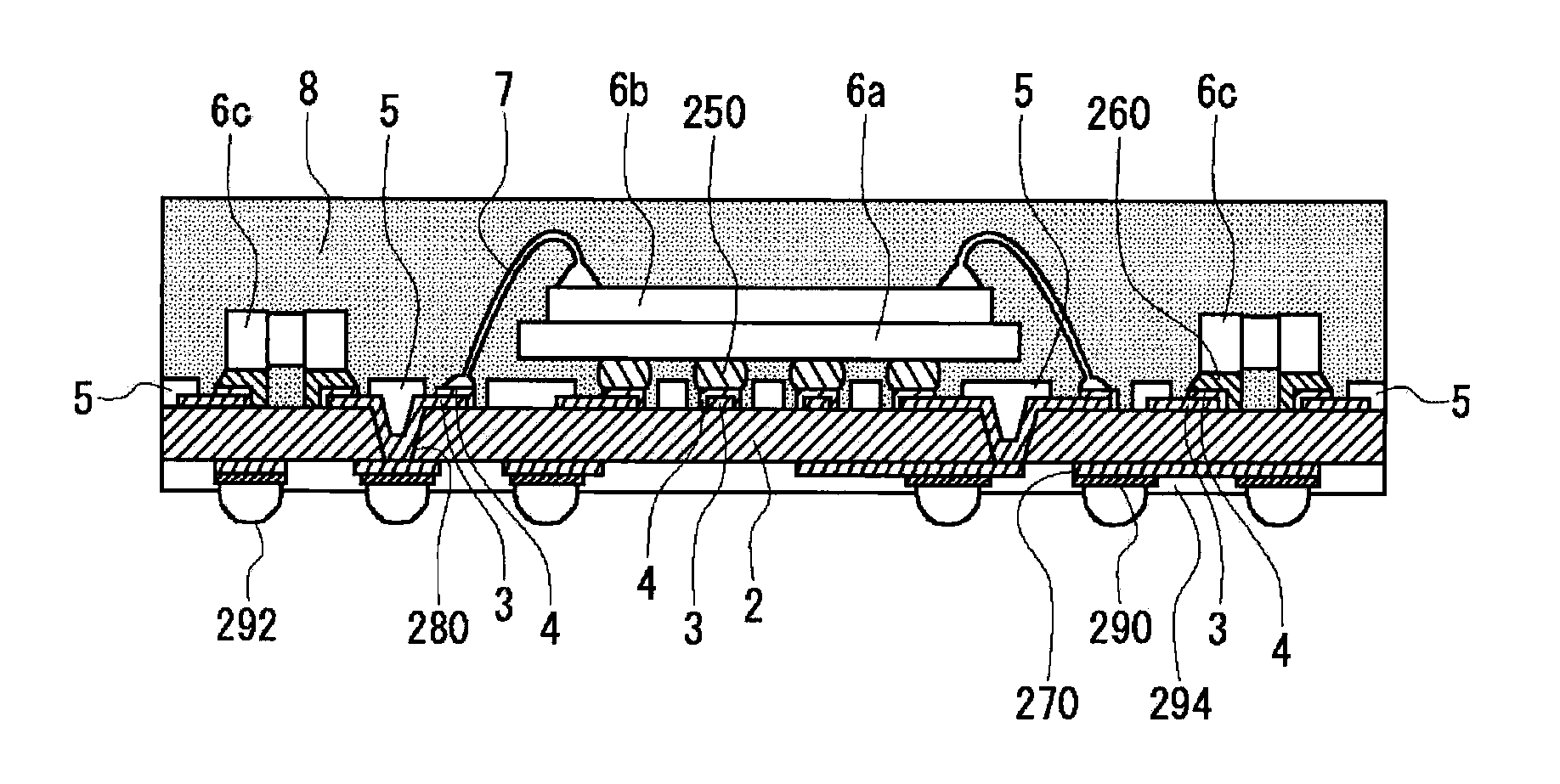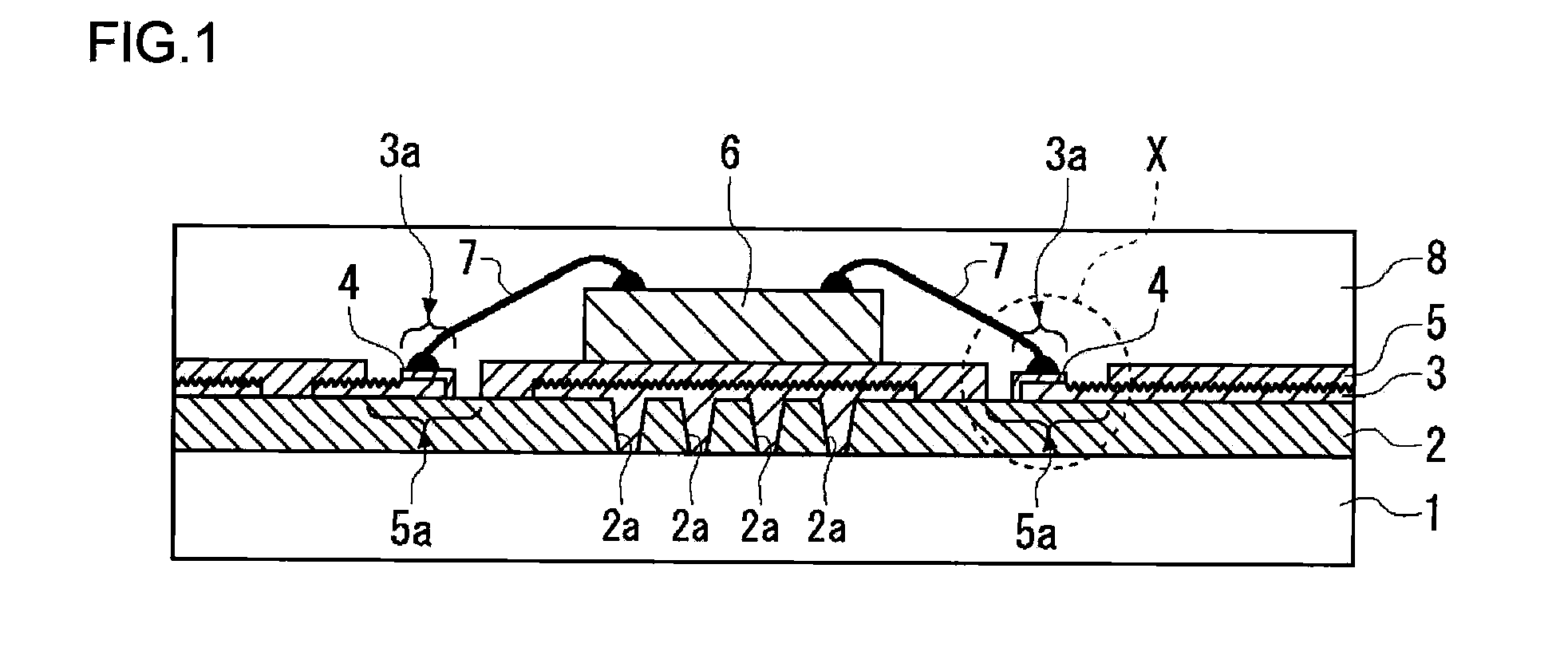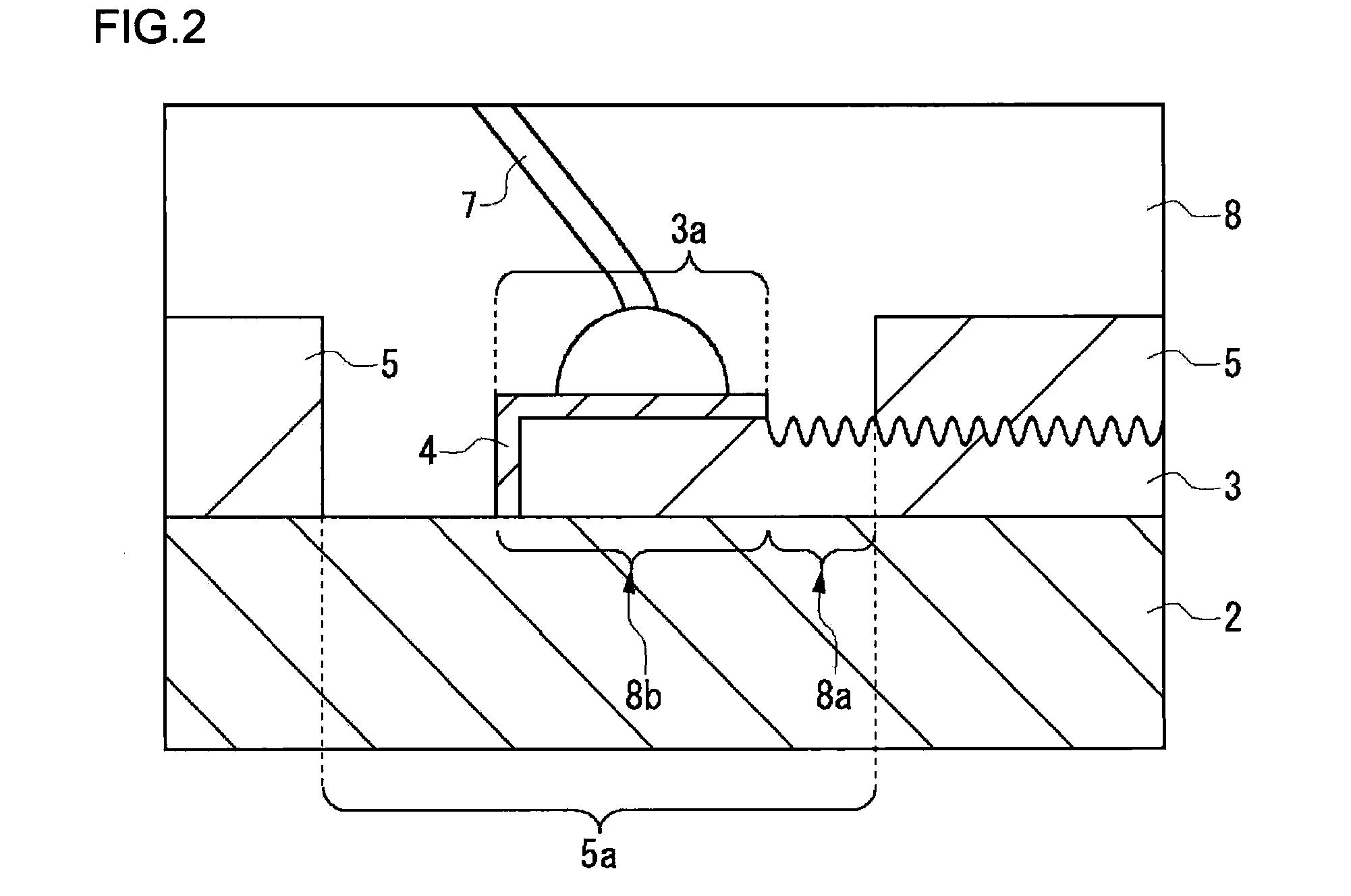Circuit Apparatus and Method of Fabricating the Apparatus
- Summary
- Abstract
- Description
- Claims
- Application Information
AI Technical Summary
Benefits of technology
Problems solved by technology
Method used
Image
Examples
first embodiment
[0048]FIG. 1 is a schematic sectional view of a circuit apparatus according to a first embodiment provided with a pad electrode. FIG. 2 is a sectional view showing a pad electrode part (cross section indicated by X in FIG. 1) of the circuit apparatus shown in FIG. 1 on an enlarged scale. A description will be given of the circuit apparatus according to the first embodiment with reference to FIGS. 1 and 2.
[0049] The circuit apparatus according to the first embodiment is provided with a metal substrate 1, an insulating layer 2, a wiring layer 3 (pad electrode 3a), a gold plating layer 4, an insulating resin layer 5, a circuit element 6, a conductive member 7 and a sealing resin layer 8.
[0050] The metal substrate 1 is implemented by, for example, a copper (Cu) substrate having a thickness of about 1.5 mm. The assembly comprising the metal substrate 1 and the insulating layer 2 is an example of the “substrate” according to the invention.
[0051] A film primarily composed of epoxy resin...
second embodiment
[0089]FIG. 10 is a sectional view of a pad electrode part of a circuit apparatus according to a second embodiment of the present invention. FIG. 11 is a top view of the pad electrode part of the circuit apparatus shown in FIG. 10. The circuit apparatus according to the second embodiment differs from that of the first embodiment in that the area 8a where the sealing resin layer 8 is in contact with the wiring layer 3 is provided around the area for connection 8b in contact with the gold plating layer 4. The other aspects of the second embodiment are the same as the corresponding aspects of the first embodiment.
[0090] The following advantage is provided by the circuit apparatus according to the second embodiment.
[0091] (6) Since the gold plating layer 4 is surrounded by the wiring layer 3 which is roughened, the likelihood of exfoliation of the sealing resin layer 8 from the pad electrode 3a is effectively reduced. As a result, the circuit apparatus with improved reliability is prov...
third embodiment
[0092]FIG. 12 is a sectional view of a pad electrode part of a circuit apparatus according to a third embodiment of the present invention. FIG. 13 is a top view of the pad electrode part of the circuit apparatus shown in FIG. 12. The circuit apparatus according to the third embodiment differs from that of the first embodiment in that the area 8a where the sealing resin layer 8 is in contact with the wiring layer 3 is provided around the area for connection 8b in contact with the gold plating layer 4 and that the end of the wiring layer 3 covers the insulating layer 2 between the insulating resin layer 5 and the gold plating layer 4. The other aspects of the third embodiment are the same as the corresponding aspects of the first embodiment.
[0093] The following advantage is provided by the circuit apparatus according to the second embodiment.
[0094] (7) Since the gold plating layer 4 is surrounded by the large area of the wiring layer 3 which is roughened, the likelihood of exfoliati...
PUM
| Property | Measurement | Unit |
|---|---|---|
| Electrical conductor | aaaaa | aaaaa |
| Area | aaaaa | aaaaa |
| Semiconductor properties | aaaaa | aaaaa |
Abstract
Description
Claims
Application Information
 Login to View More
Login to View More - R&D
- Intellectual Property
- Life Sciences
- Materials
- Tech Scout
- Unparalleled Data Quality
- Higher Quality Content
- 60% Fewer Hallucinations
Browse by: Latest US Patents, China's latest patents, Technical Efficacy Thesaurus, Application Domain, Technology Topic, Popular Technical Reports.
© 2025 PatSnap. All rights reserved.Legal|Privacy policy|Modern Slavery Act Transparency Statement|Sitemap|About US| Contact US: help@patsnap.com



